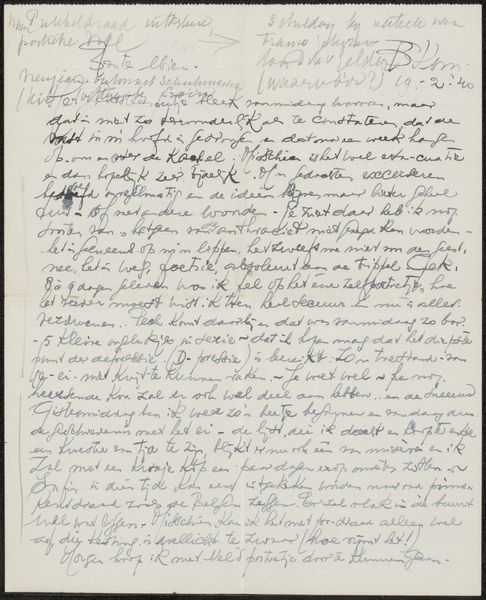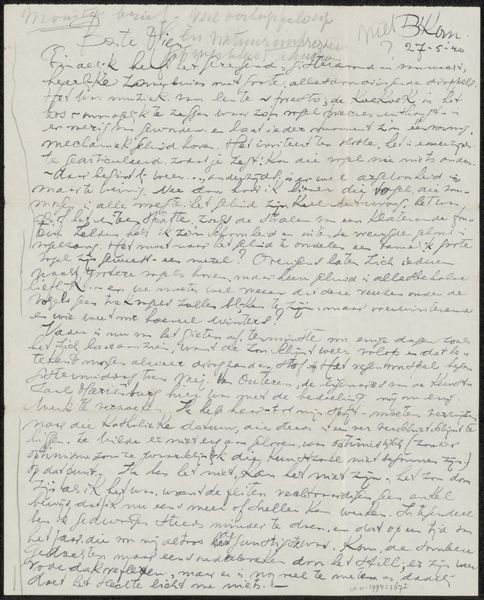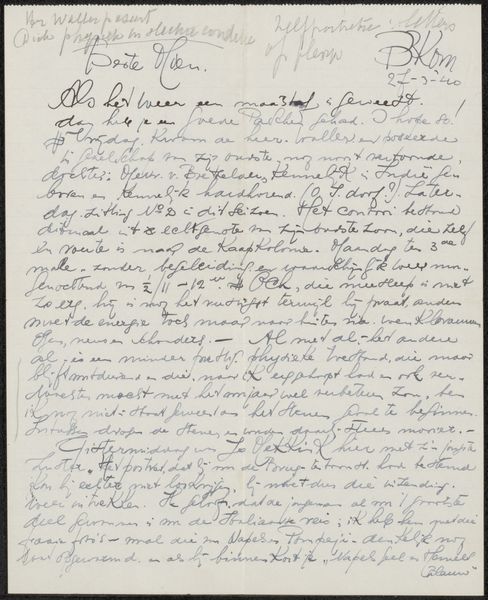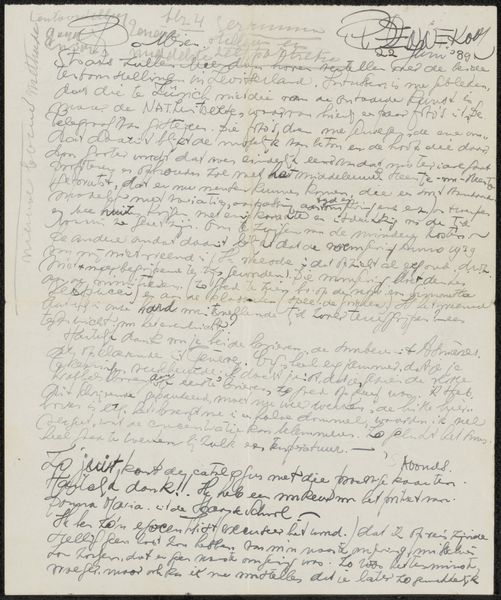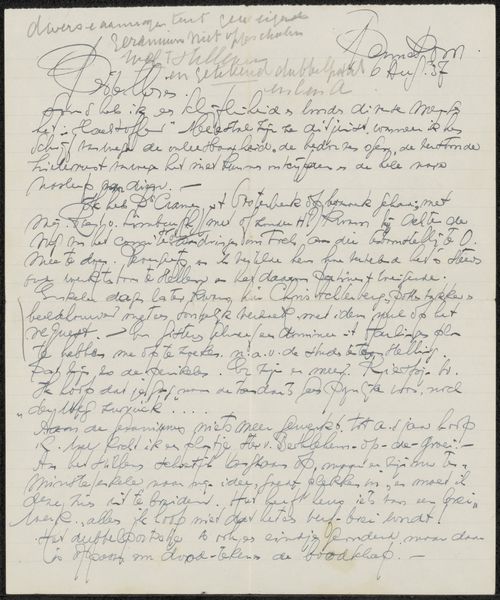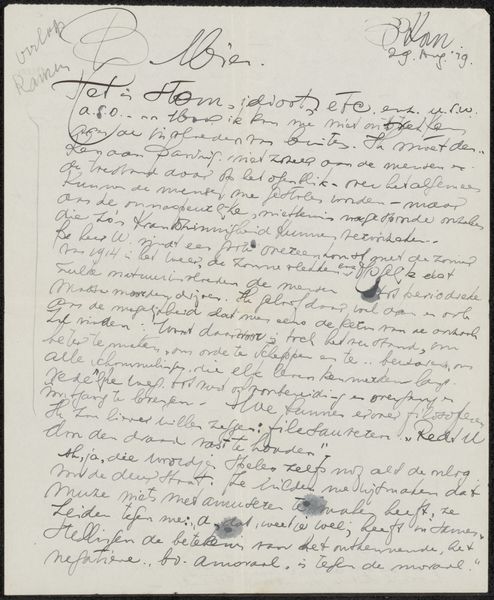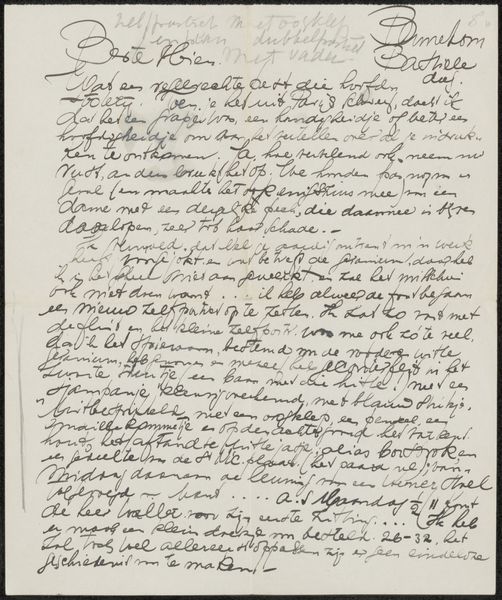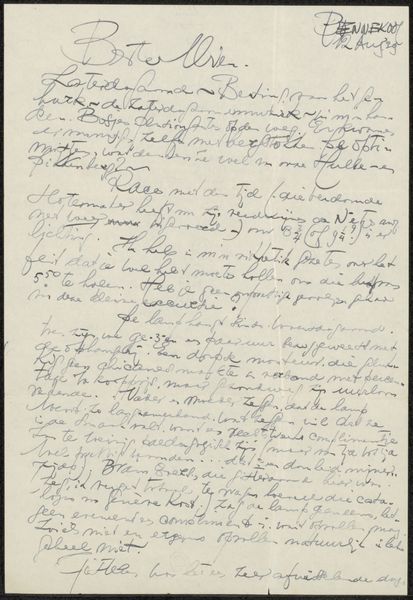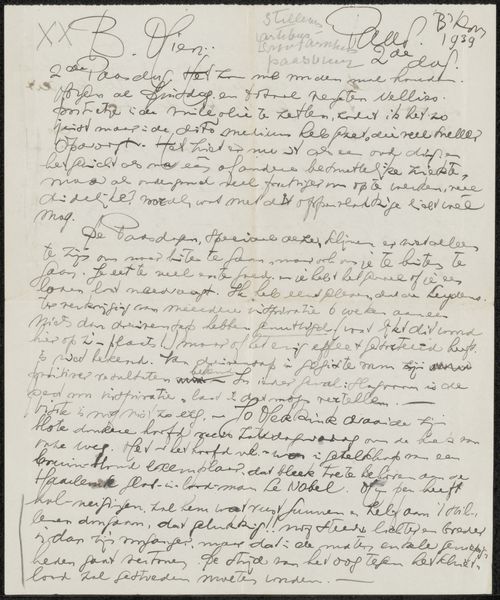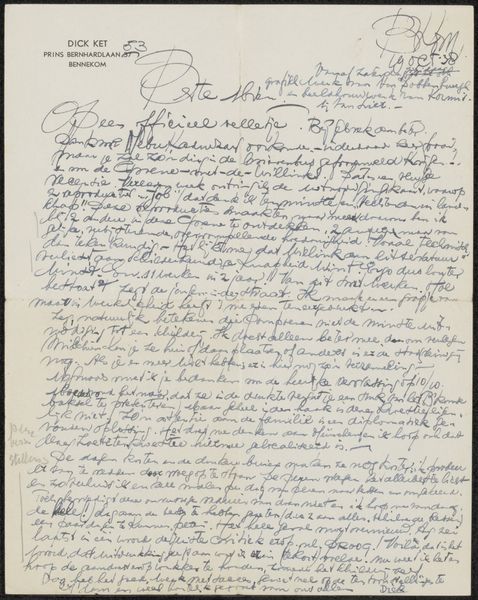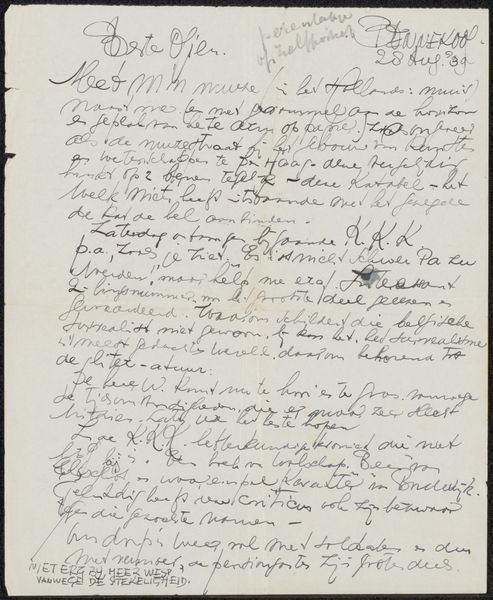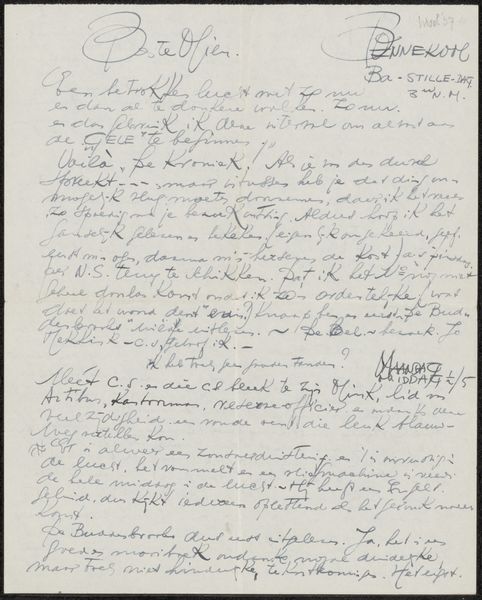
drawing, paper, ink
#
drawing
#
paper
#
ink
Copyright: Rijks Museum: Open Domain
Curator: I’d like to draw your attention to a fascinating piece from Dick Ket, titled "Brief aan Mien Cambier van Nooten.” It is from between 1940 to 1946, using ink on paper and part of the Rijksmuseum collection. Editor: My first impression is of layered secrets. There is the directness of handwritten communication alongside a sense of obscurity in not being able to discern everything, creating an enigmatic texture to the work. Curator: Exactly, its power resides in its formal composition— the arrangement of lines, the varying darkness of the ink, the utilization of the entire picture plane. Look at the subtle nuances in the pressure of the pen strokes which articulate space. It embodies the act of writing itself. Editor: True, but I'm also thinking about the historical context of a letter penned during wartime. Ket lived through a tumultuous era in the Netherlands under Nazi occupation, adding a layer of poignant emotion. What was the content of the letter itself; what realities dictated what he chose to write down, and how he wrote it. Curator: Indeed, but even detached from the direct historical context, its formal attributes create certain powerful, almost universal feelings. The varying opacities, almost like watercolor washes, generate rhythm, counterpoint. Look closely to discover a kind of formalist narrative! Editor: Yet for me, this letter reflects resilience. Despite potential constraints—we do not know if or how the war effort effected him directly—the simple, accessible form of handwritten text signifies continuity in the midst of disruption. His impulse was to reach out through this particular medium, to form ties via handwritten communication, so what drove it. Curator: Perhaps then, both aspects are crucial here. The letter showcases how formalism transcends, making itself present even amidst historical pressures, where the artist's technique crafts an image, while societal circumstances shaped the narrative and emotional substance, merging technique and intent! Editor: Indeed, let's hold onto both: formalism illuminates the mechanics of representation while historical awareness anchors meaning!
Comments
No comments
Be the first to comment and join the conversation on the ultimate creative platform.
